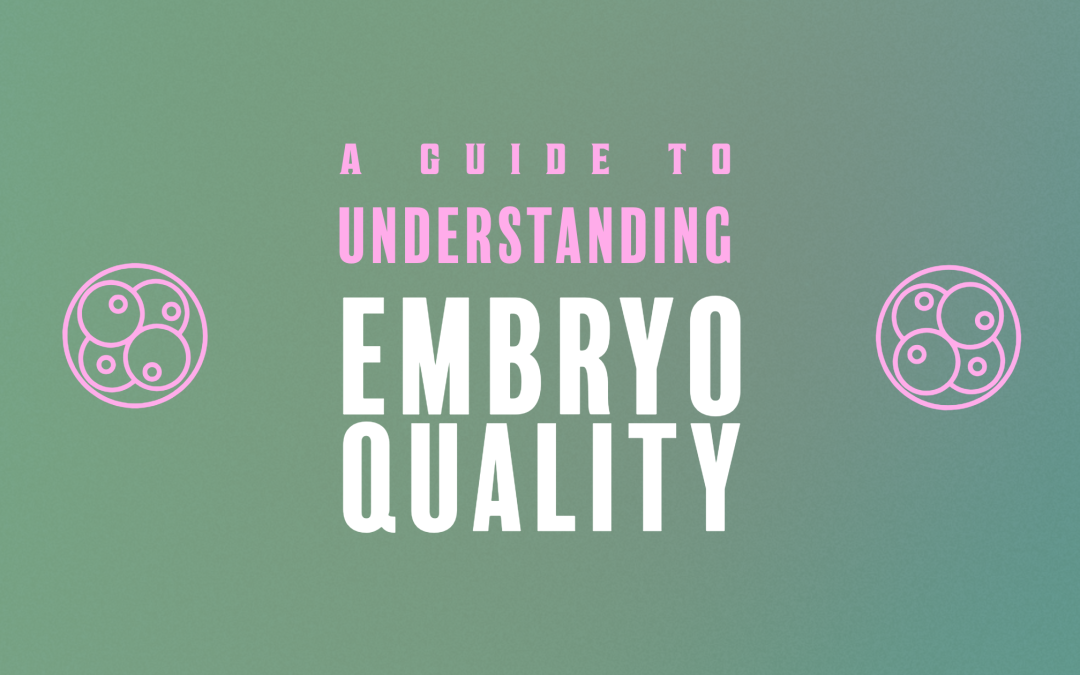Somewhere along your embryo adoption journey, you may stumble upon information about embryo quality and wonder, “What do all of these letters and numbers mean?”
You are not alone! The terms embryo quality and embryo grading can seem complex and elusive, but we are here to help break it down for you.
What is Embryo Quality?
Embryo quality refers to a grade given to an embryo by an embryologist or fertility specialist, and it is said to predict the likelihood that an embryo will develop into a successful pregnancy and healthy baby. Embryologists and physicians look at several factors to be able to give the embryos a grade. Many clinics and hospitals use different grading systems, making it even more difficult to understand.
It is also important to note that even though a medical professional may give an embryo a lower grade, it can still develop into a beautiful, healthy baby!
Key Factors in Assessing Embryo Quality
1. Morphology: Morphology involves looking at the physical appearance of the embryo under a microscope. Fertility specialists specifically look at the cell number and symmetry. Ideal embryos have an even number of cells that are well-organized and of similar size. Specialists also look for embryos that reach the blastocyst stage. This happens by day 5 or 6 after fertilization, and the embryos have a fluid-filled cavity and inner cell mass. Embryos that reach this stage are often considered higher quality.
2. Genetics: Some clinics may perform genetic testing on the embryos, referred to as preimplantation genetic testing (PGT). This is a process where the embryos are biopsied and samples are sent out to a lab that looks at the chromosomes. Embryos may be labeled as euploid (chromosomally normal – has the correct number of chromosomes) or aneuploid (chromosomal abnormality). You may also see a result of inconclusive, meaning there may have been an issue with the sample or testing process.
3. Developmental Timing: Fertility specialists play close attention to the timing of the embryo development. Embryos that follow a typical timeline (reach the blastocyst stage on schedule) are generally considered to be of better quality.
Types of Grading
As mentioned before, different grading systems are often used between fertility clinics. One of the most common grading systems uses a scale ranging from 1-6, with six indicating the most advanced. It also uses the letters A, B, and C, with A as the best quality and C the lowest. Other clinics may grade simply by using the terms good, fair or poor.
Number – Degree of expansion of the embryo’s cavity
What is a blastocyst? It is a key stage in the development of an embryo, typically occurring about 5 to 6 days after fertilization.
- Grade 1: Early blastocyst – Still developing, not yet fully expanded or hatched
- Grade 2: Blastocyst
- Grade 3: Full Blastocyst
- Grade 4: Expanded Blastocyst
- Grade 5: Hatching Blastocyst
- Grade 6: Hatched Blastocyst – More advanced stage, ready to attach to the uterine lining
First Letter – Inner cell mass (ICM) quality
What is the inner cell mass? It is a cluster of cells found inside a blastocyst. It should be well organized and compact, and should have a higher number of well-formed cells.
- Grade A: Many tightly packed cells
- Grade B: Cells stay loosely together
- Grade C: Few cells, poorly formed layer
Second Letter – Trophectoderm (TE) quality
What is the trophectoderm? It is the outer layer of cells in a blastocyst, or the “shell.”
- Grade A: Many smooth cells, equal size
- Grade B: Few to moderate number of large but healthy cells
- Grace C: Few large cells
Your health care providers will help you to understand better what embryo quality means, and what it means for your transfers with your donated or adopted embryos.
Keep in mind, embryo grading is not an exact science, and there can be a lot of variability when it comes to assessing embryo quality.
It is important to remember that the embryos are being graded only on what is visible under the microscope, and there is potential for inconsistency between labs and professionals. While embryo quality is thought to correlate to higher pregnancy outcomes, it does not guarantee success, and lower graded embryos can still produce happy, healthy babies. It is essential to understand that embryo quality is just one piece of the puzzle, and many other factors play a role in helping you to complete your family.
To learn more about embryo adoption and donation, visit EmbryoAdoption.org.


Recent Comments